The air conditioning (AC) system is a crucial component of any vehicle, especially during hot weather. In the Honda CR-V, the AC system is designed to keep the cabin cool and comfortable, but sometimes it may fail to produce cold air.
This issue can be frustrating and uncomfortable, especially when driving in hot and humid conditions. Several factors can cause the Honda CR-V AC system to stop producing cold air, including refrigerant leaks, clogged air filters, faulty compressors, and other electrical problems.
As a driver or owner of a Honda CR-V, it is essential to diagnose the underlying cause of the AC system’s poor performance to fix it and restore the system to its optimal performance.
In this context, proper maintenance and timely AC system repairs can help ensure that you can enjoy a comfortable ride in your Honda CR-V throughout the year.
A malfunctioning air conditioning system in your Honda CR-V during summer can quickly become a nuisance when you build up sweltering heat in the vehicle. A CR-V’s AC might not blow cold air for several reasons. This article will explore some of them.
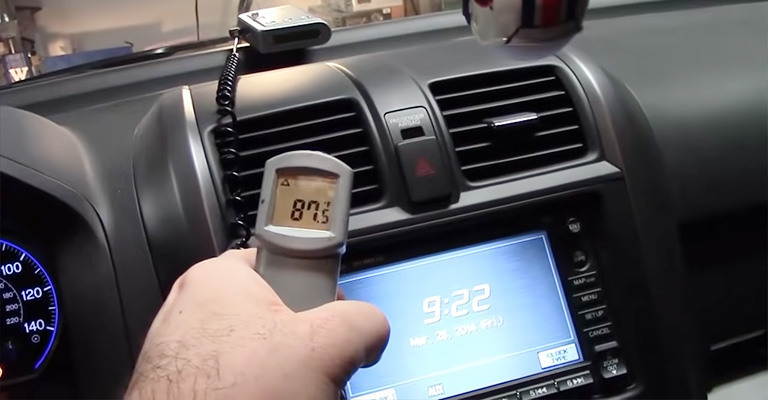
Why Does Honda CR-V’s Air Conditioner Not Cool?
The low or overcharged refrigerant causes Honda CR-V AC systems not to cool properly, compressor malfunctions, clogged cabin air filters, dirty condenser or evaporator coils, dirty or sluggish blowers, and bad relays and fuses.
It is less likely that clogs and obstructions in the expansion valve or orifice tube, overcharged oil, faulty blend door actuators, or a defect in the climate control unit will cause the problem.
1. Low Refrigerant
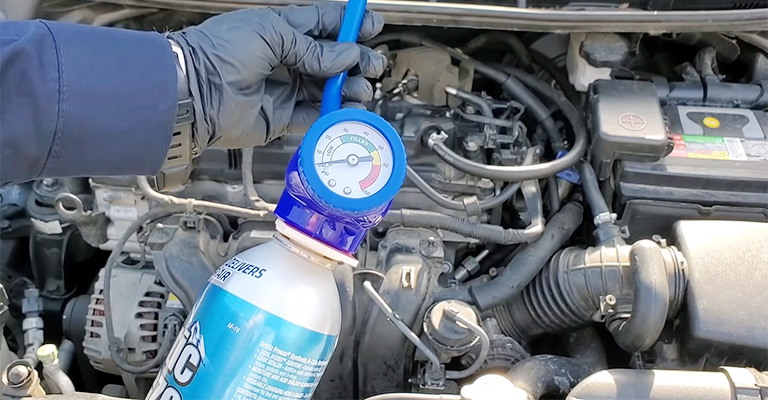
The AC system in the CR-V is one of the most common culprits of not blowing cold air due to a lack of refrigerant. A leak or not recharging the AC may have caused this problem in this situation.
Refrigerant Leak
The presence of low refrigerant in your Honda CR-V does not necessarily signify a leak. In a properly sealed AC system, refrigerant should never leak, but most car AC systems contain minor imperfections that cause small leaks over time and require recharging.
If you do not service the AC system of your CR-V for a long time, the refrigerant level will eventually be so low that the system can no longer provide cooling.
It only needs to be refilled once, and then you can drive comfortably without worrying about the temperatures. It indicates that there is probably a leak if the refrigerant level drops rapidly again.
Refrigerant Leak Causes
Leaks in the condenser or evaporator core, or cracks in a hose, can cause refrigerant to leak in a CR-V. Injecting fluorescent dye into the AC system can be used to detect the leak. Upon leakage of refrigerant again, the leaking component will shine under UV light.
How To Recharge AC Refrigerant In Honda CR-V?

There are two ports in the Honda CR-V’s air conditioning system. There is one that is labeled H for high pressure and another that is labeled L for low-pressure.
You can charge your AC through the low-pressure port using a do-it-yourself AC recharge kit.
- Open the hood of your CR-V.
- Your vehicle may use a different type of refrigerant. You can usually find this information in your owner’s manual or under the hood.
- Start the engine.
- Put your air conditioner on the coldest temperature, and set the fan to the highest speed.
- Ensure the AC recharge kit is connected to the low-pressure service port labeled L after removing the cap.
Note: Whenever AC hoses are not labeled, connect the recharge kit to unlabeled ports. High-pressure ports will not accommodate the recharge kit because it will only fit the low-pressure ports.
Releasing the refrigerant into the system until the recommended pressure is reached requires shaking the canister briefly.
2. Faulty Blend Door Actuator
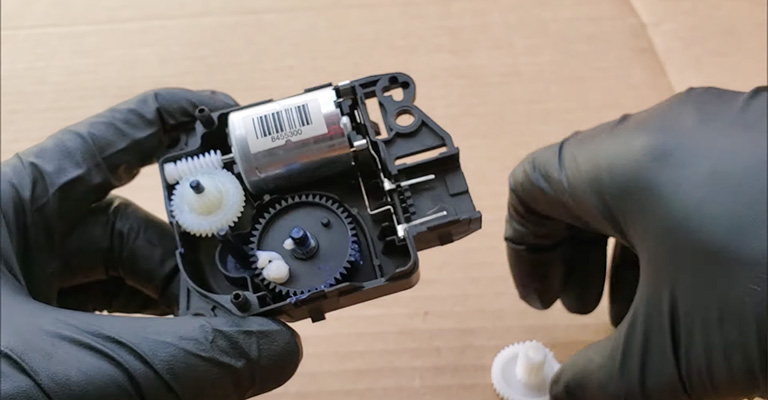
A blend door actuator controls the temperature inside your CR-V. In the event of a problem with the heat of the air conditioning system, a faulty blend door actuator may be involved.
In Honda CR-Vs, the most common symptom of a faulty blend door actuator is a high-pitched clicking sound coming from under the dashboard. When the air conditioning is turned on, or the temperature is adjusted, the sound will be most noticeable for a few seconds.
Symptom: Knocking Sound
If your CR-V is knocking noise from behind the dashboard, it may result from a bad blend door actuator. When you start/stop the air conditioning system or turn on the engine, there is a sound similar to a tapping on the door.
One Side Is Hot; Another Side Is Cold
When a blend door actuator is defective in a vehicle with dual-zone climate control systems, the hot air will come from one side of the car, and the cold air will come from the other side.
Replace The Faulty Part
You can’t repair a bad blend door actuator and must replace it with a new one. The replacement job is complex and is not recommended for DIY enthusiasts. It is possible for the blend door actuator to need to be calibrated after it has been replaced.
3. Sluggish Blower Motor
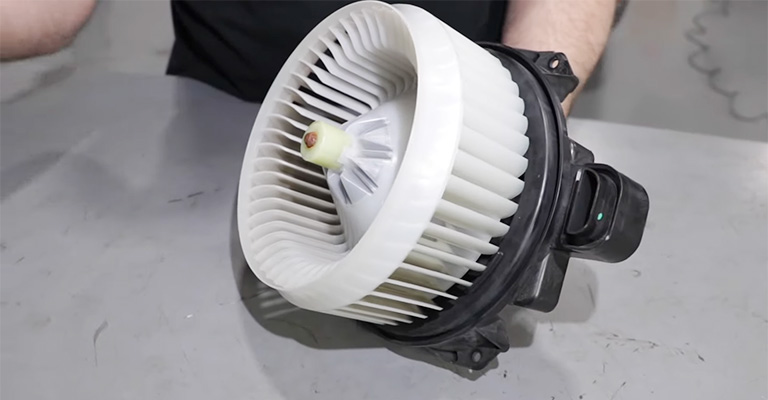
AC cooling performance in your CR-V will decrease if the blower motor in the vehicle is not spinning fast enough, either due to an internal defect or due to a failure of the resistor/control module.
During operation, a bad blower motor makes unusual noises, and passengers may notice reduced airflow from the AC vents.
A bad mode door actuator, a clogged cabin air filter, or a dirty evaporator can all cause reduced airflow, and it doesn’t always indicate a problem with the blower motor. Therefore, all of them must be inspected when trying to diagnose bad airflow.
4. Dirty Blower Motor
In CR-V, the blower motor blows cold air through the AC vents through the central component of the air conditioning system. Despite the cabin air filter filtering most filth and other particles from the air, some particles escape and can attach themselves to the blower cage’s fins.
The fins can accumulate dust over time, reducing airflow and thus reducing cooling effectiveness. The spinning cage can wobble if the blades are caked with dirt, and the wind blows dirt into them.
Additionally, it may cause unusual noises from behind the dashboard and strain the motor, further reducing airflow and cooling performance.
Clean The Blower Motor
Make sure the cage is in good condition by removing the blower motor, typically hidden under the dashboard on the passenger side. Make sure it is clean if it is found to be dirty by brushing it.
5. Clogged Expansion Valve Or Orifice Tube
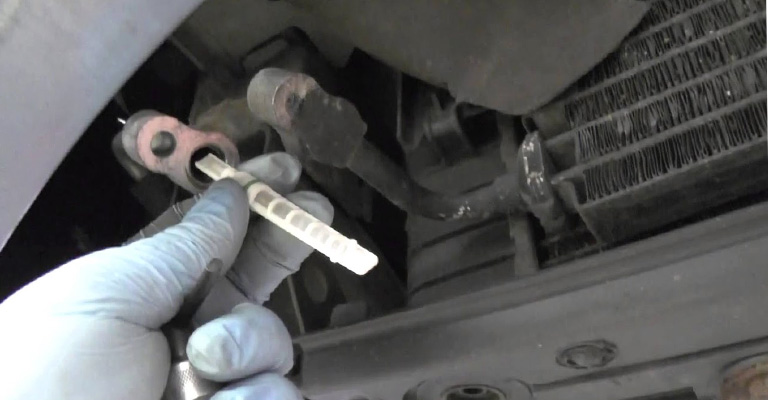
According to the model of your vehicle, your air conditioning system uses either an expansion valve or an orifice tube.
Orifice tubes and expansion valves have the same function, reducing the refrigerant’s flow and pressure before entering the evaporator coil.
A clogged pump or compressor is at risk of clogging due to contamination, including metal shavings from a failing unit.
If your AC system is contaminated, you may flush the condenser and evaporator out before putting in the new part. The condenser, evaporator, and compressor may all need to be replaced when contamination is severe.
6. Overcharged Oil
In your Honda CR-V, you may have flooded the AC system with oil if you only topped off the refrigerant with off-the-shelf refrigerant recharge cans and are not repairing the leak.
A pool of excess oil within the AC system can cause the inner walls of the evaporator and condenser to become coated with oil, reducing their ability to absorb or disperse heat and resulting in a diminished cooling capacity. Furthermore, excess oil can cause the compressor to malfunction prematurely and reduce its performance.
7. Faulty Compressor
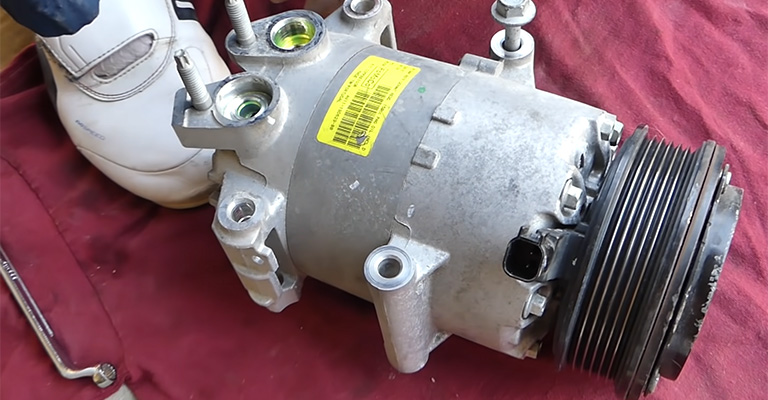
Compressors are the heart of Honda CR-V air conditioning systems. They pump refrigerant throughout the air conditioning system, converting it from a gaseous state to a liquid state as the refrigerant passes through the condenser. An AC will only blow cool air if its compressor fails.
Causes Of Compressor Failure
Insufficient lubricant: A properly lubricated compressor reduces friction and minimizes mechanical wear. Compressors cannot function properly if not enough oil is added to the refrigerant or to the compressor itself if it has been replaced.
Too much oil: Excessive amounts of oil added to a refrigerant can cause compressor performance issues, reducing cooling efficiency and premature compressor failure.
An AC compressor can stop working without apparent cause in vehicles with high mileage or older engines. An unexpected manufacturing defect can also result in a compressor malfunction.
8. Dirty Evaporator

Additionally, a dirty evaporator can severely reduce the cooling performance of an AC unit in a CR-V. Despite the cabin air filter’s ability to trap most dirt or airborne particles, some escape and lodge on the evaporator.
When these particles build up on the fins and block the airflow through the evaporator, the cabin fails to cool properly, reducing airflow.
Symptoms Of A Dirty Evaporator:
When the evaporator in your CR-V clogs up, you will experience choppy airflow from the AC vents, and you will notice a moldy smell inside.
Clean The Evaporator
You need to be diligent when cleaning the evaporator in your CR-V. It is usually necessary to remove the whole dashboard to reach the evaporator. The best way to accomplish this is to do it in a workshop.
9. Dirty Condenser
The AC system in Honda CR-V features a condenser coil located at the front of the vehicle that releases heat from the refrigerant into the surrounding air.
During the life of a mattress, grime, bugs, and other small particles can build up on the surface and in the gaps of the mesh.
It results in poor cooling because fewer air currents pass through the mesh, hindering the condenser’s ability to release heat.
Clean The Condenser
To clean the condenser on your CR-V, check its cleanliness first. To access the condenser, you must usually remove the front bumper. For cleaning, you can use a pressure washer, but ensure it’s on low pressure, as high pressure can damage the delicate fins on the condenser.
10. Clogged Cabin Air Filter

CR-Vs use pollen filters, also known as cabin air filters or microfilters, to filter the air inside the vehicle. Dirty filters can cause overall ventilation to deteriorate, resulting in reduced cooling and airflow.
It also negatively impacts fuel economy due to its strain on the entire AC system. Changing cabin air filters does not have a prescribed interval, but most manufacturers recommend doing so every 10,000 to 20,000 miles.
Filters can become dirty much sooner than the manufacturer recommends if your vehicle is driven in a dusty or polluted environment.
Can You Clean A Dirty Cabin Air Filter?
It is often recommended to clean the cabin air filter first before replacing it in CR-Vs. At least a large part of the dirt particles can be removed, for example, using a vacuum cleaner or compressed air system.
As a result of this procedure, you cannot reach the deeper layers of the filter. In this case, cleaning the filter will not significantly increase its performance. It is generally impossible to avoid replacing the dirty filter.
11. Overcharged Refrigerant
A CR-V’s AC blows warm air only when overcharged with refrigerant, just like it does with low refrigerant. When a cooling system is overcharged, it affects cooling performance and can damage the compressor and lead to major leaks.
Ambient Temperature Effect On Refrigerant Pressure
As the outside temperature rises, the refrigerant pressure changes. Consequently, if the ambient temperatures rise above recommended temperatures, the CR-V AC might still over pressurize.
Newer vehicles increasingly use R-1234yf instead of R-134a as a more environmentally friendly alternative. Most modern vehicles use R-134a refrigerant, but newer vehicles use R-1234yf more frequently.
Different types of refrigerants result in different pressure values based on ambient temperatures. You can find out what type of refrigerant your vehicle uses by looking in your owner’s manual or underneath the hood.
Check Refrigerant Pressure
The CR-V’s low-pressure (L) port should be connected to the pressure gauge. To avoid exposure, release some refrigerant if the pressure exceeds the recommended.
Resolving the Honda CR-V AC Not Cold Issue
When you turn on your Honda CR-V air conditioner (AC), you’re stunned when you don’t get cold air when it’s hot outside. For Honda CR-V owners, that’s one of the most frustrating things to experience.
It makes driving particularly uncomfortable and unbearable if the air conditioning is not working, especially when high temperatures and humidity are high. Your air conditioner can be reconnected to produce cold air in most cases with a simple solution.
AC Recharge
There is a possibility that the air conditioner won’t blow cold until a leak has been discovered. Some refrigerants can leak out of the system over time, whether over a few days, weeks or even decades.
AC Compressor Replacement
A malfunctioning compressor will most likely cause warm air from the vents. In mechanical failure, a squealing or grinding noise may also be heard from the compressor.
AC Condenser Replacement
It is important to note that the air conditioner will also fail if the condenser fails. If the air conditioner is on, the engine idle speed will not undulate as normal, and the temperature in the vehicle will be just a bit warmer than normal.
AC Evaporator Replacement
In the case of an AC evaporator failure, the air from the vents will be hotter than usual. This is because a clogged or leaking evaporator will not receive enough refrigerant to cool the air effectively. Some vehicles have a warning system, such as a blinking AC switch.
Blower Motor Replacement
There may still be heat or cool available at the vents if the blower motor fails, but there will be a significant reduction in air pressure. This will occur no matter what speed or temperature your fan is set to.
Another possible symptom is rattling or grinding noises from the passenger floorboard whenever the heater or air conditioner is turned on. A broken fan blade or a faulty bearing may cause the problem. Depending on the fan speed, the noise may come and go randomly.
Final Words
You may be experiencing AC problems with your Honda CR-V for various reasons. You should always begin with the most obvious cause, insufficient refrigerant when finding the reason for the problem.
If your Honda CRV’s air conditioning system fails, you may have to replace it completely, costing thousands of dollars.
In response to the CRV’s air conditioning problems, Honda has issued a technical service bulletin TSB. If your Honda CR-V air conditioner emits warm air, go to the dealer as soon as possible to have it serviced.
Nevertheless, workshop visits are recommended for laypeople. Having your AC diagnosed by a professional mechanic will help you resolve the issue.

My 2020 honda cr-v just cost me 1000.00 for all wheel system problem, and while at dealer told me my air compressor is leaking oil and needs to be replaced another 3 thousand. My Honda is not even 3 years old and mileage 60+ just over the expired warranty . I need to know who to contact higher up than a dealer to get Honda to own up to this factory making less than perfect air compressors . Should last more than 2 and 1/2 years in New England , maybe used air 2 seasons